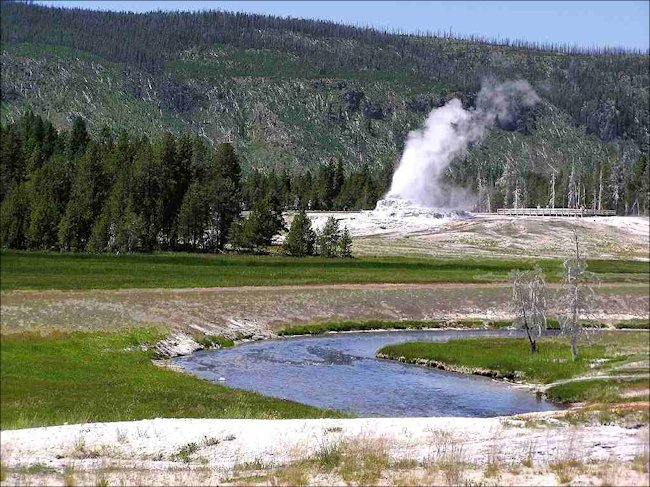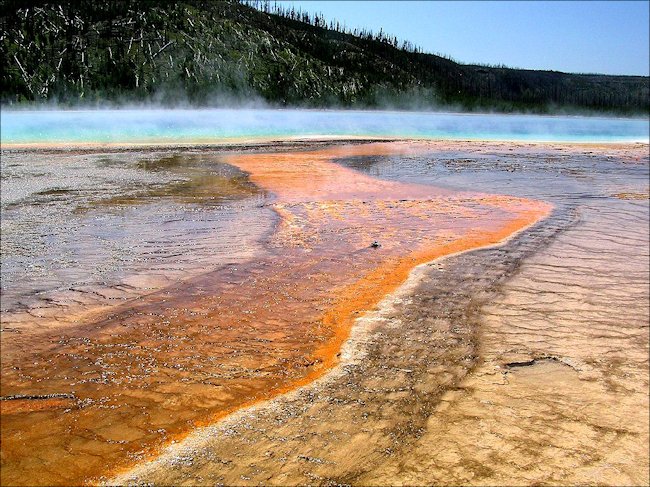Yellowstone Hot Springs and Geysers
Cold surface water sinks through the cracks in the Yellowstone volcanic caldera basin for up to 10,000 where it comes into contact with the hot rocks of the shallow magma chamber. The water becomes superheated and less dense than the downward moving colder water. It therefore rises to the surface dissolving some of the silica in the rhyolite rocks making a solution of silica within the rising water water.

Some of the silica is deposited as a mineral called geyserite on the walls of the underground 'plumbing system' making a pressure-tight seal creating a system of tubes that can withstand the great pressure needed to produce an explosive geyser like Old Faithful. If the underground 'plumbing system' has large tubes then the heat is released at a slower speed and produces hot springs.
Different colored bacteria microbes and algae thriving at different temperatures cause the bright colours of the volcanic geothermal hot springs like West Thumbs Paint Pots, morning Glory, Grand Prismatic, Abyss, Emerald, and Sapphire. As the hot water spills out of the hot springs it cools down and different bacteria find the place where the temperature is just as they like it and then grow. The Vikings were the first to record finding a geyser. That was on Iceland at a place called Geyser.

Travel books

